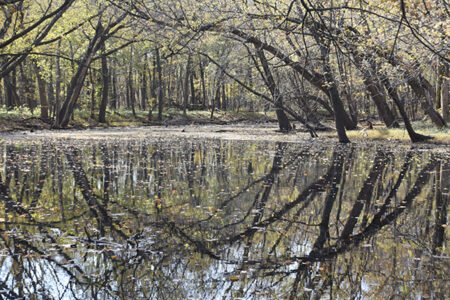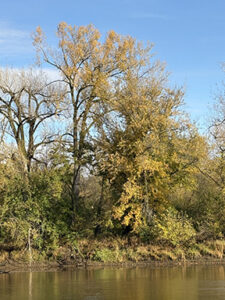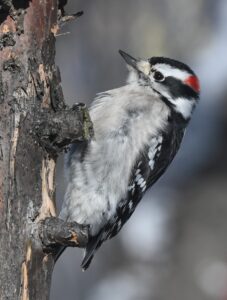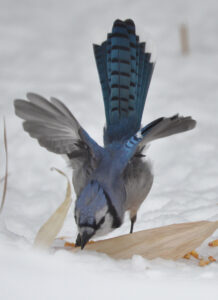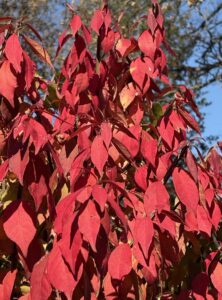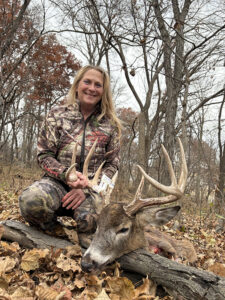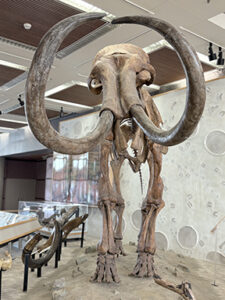Tree leaf color peak time will pass soon — plus memories of Armistice Day Blizzard in 1940
NOVEMBER is upon us. Fall leaf color has peaked, or nearly so, to provide a vast array of colorful sights to behold.
Any short hike in either your own backyard, on a bike path or nature trail, or just a relaxing drive into the countryside will offer you a free adventure into our end of summer and beginning of fall season pleasures.
It is a sight to behold that will be brief and spectacular at the same time. One can find any of these colorful excursions close to home. However if you are so inclined, a short or long drive, your choice, will offer many rewards.
November is a month with many faces. Calm and warm one day, windy and cold another, and following each daily setting will be even more potential for weather anomalies of whatever Mother Nature can pull out of her “magician rabbit hat” to keep us humans wondering and hopefully prepared for unexpected things like strong winds (to blow tree leaves away), frosty mornings, or Indian Summer latent warm and balmy days.
Mix in a bit of rain, sleet or snow to this recipe just to keep things interesting. While the first big measurable snow is possible, November reminds us that nothing is off the table.
Be ready. Be prepared. Take what is given us on the weather ledger and adapt.
———-
The previous paragraphs have set the stage for my next look back at the date of Nov. 11, 1940. This date is a natural history moment when our earth’s natural chaotic weather system went into overdrive in a huge and spectacular way.
The outcome of the day was big news. Lots of people died that day who had no idea at the beginning of that warm day in the Midwest how severe things would turn out to be. Fate would have its way in the harshest of ways.
I was not born yet. My parents and grandparents were doing their thing of living on farms in the Bremer County area. There were cows to milk, chickens to feed.
Crops were mostly harvested but maybe not all. Life was transitioning into all the normal preparations of fall. Garden products were stored or already canned and set on shelves in the basement. They would eat those garden foods as needed to survive another long winter.
Nov. 11 started out warm to begin with, one of those idealistic times when summer was lingering longer, mild temperatures were nice to have. Things were going to change fast on that fateful day. Over 160 upper Midwesterners died that day.
Yes, there were weather forecasters in 1940. They made updates at 8 a.m. and 8 p.m. Forecasting any storm with precision was not its big game in 1940. So as the Armistice Day (now known as Veterans Day) started to unfold, weather circumstances were going to unfold in one of Nature’s most impressive displays of power.
As occasionally happens with our chaotic weather factors, warm moist air from the Gulf region will move northward to run up against a Canadian cold front of dry air. A storm system will build. No one knew how severe Nov. 11, 1940 would turn out to be until after the storm passed.
What Midwesterners did not know in advance was the intensity of a strong series of low pressures that had come ashore in Oregon and Washington. Normally, all those storm systems lose power as the air moves over the mountains along the west coast of the United States.
This time was different. A strong southerly flow of warm moist gulf air was set to intercept and collide with the cold air of Canada. From Kansas to Michigan, a 1,000 mile wide path for heavy snow and strong winds would plunder the landscape.
Air temperatures went from 55 degrees above zero to -50 degrees in only a few hours. Night time wind chill effects were easily -55 degrees.
The blizzard of epic proportions began slowly at first and then intensified on an order of magnitude not suspected. Warm weather caught people unprepared for the worst.
Outdoor enthusiasts, and in particular duck hunters, had been waiting for a cold front to happen, pushing ducks southward so as to avail themselves to duck hunters. Duck hunting was one way of helping to lay up food stores for the winter. A cold front weather system was just the ticket and invitation to go duck hunting.
Dressed for warmer conditions, hunters sought out marshlands and river courses. Along the many backwater islands of the Mississippi River, hunters ventured out to set up decoys and wait.
Ducks knew more about avoiding bad weather than people did. The numbers of waterfowl flying south was so impressive that hunters could easily take a generous limit. They did kill a lot of ducks.
More ducks followed and came flying in huge numbers to set down in any sheltered areas of wetlands or river backwaters just to get out of the wind and rest. Hunters saw the warm day melt away as clouds rolled in.
A mist and then rain came. Quickly the rain turned to sleet as the air temperature dropped fast. Freezing rain soaked hunter’s clothing first, and then the rain turned to snow, wind driven and biting at the hands and faces of hunters who now knew they were in a desperate race of survival.
Some made it out. Many did not.
On islands in the Mississippi, hunters sought high ground of which little was offered, overturned their light boats or canoes and tried to use that shelter to stay warm. Most failed and lost body heat too fast. They died of hypothermia.
Some built fires, if they had matches that were still dry. Others walked or stomped around to stay active all night long to avoid the painful death of freezing.
Some of those hunters made it. Many did not.
Back on land both in the small towns and countryside, people were dealing with snow drifted roadways and stalled vehicles. Their fate was not much better. Where people could take shelter in the nearest house or farmstead, survival was much improved.
For farmers, getting cattle out of pastures and back toward the safety of windbreaks and barns was a massive chore. It was vital to move livestock indoors if at all possible. Later, newspaper accounts of many storm related themes called it “The Day All Hell Broke Loose.”
One young lad recalled his efforts to help his father and other farm hands attempt to drive cows and their calves from a pasture well over two miles away back toward the farmstead. This happened at noontime when the warm weather suddenly gave way to rain and then heavy snow.
The men could hardly breath or see in the fierce windy conditions. Yet they somehow got the cattle moving but with their own difficulties of not wanting to walk into the wind.
The cows preferred to move downwind which would have been a deadly mistake. With persistence, the farm hands got the cows moving north until a fence stopped them. The men cut the wires and finally got the cows across.
One old cow was smart. She put her head down and walked into the wind. Since she was a “boss cow” on the cattle pecking order, the other cows and calves followed her. Finally, the wind seemed to calm down, but the men did not know why.
It was because they had arrived at the windbreak and the barn, two things they could not see due to the blinding snow. The barn was finally located, doors opened, and the cows were allowed to move inside.
The tinkling of icy hairy coats rattled inside the barn. Luckily, they all were safe from this storm.
The above story is true. It is a firsthand account written by a storyteller and poet named Micheal Cotter who grew up on a farm near Austin, Minn.
He was about ten years old in 1940. His father had looked at the dark sky laying northwest of the rolling hills of Minnesota on that day, Nov. 11, 1940. He and the farmhands had just finished a noon lunch. Mr. Cotter instructed the men to go get the cattle out of the pasture and drive them home to the windbreak and barn.
The survival of the farm was at stake if the cattle were not brought to safety. I cannot imagine how they did what they had to do with rain, wind and then snow so thick that vision was super low.
Michael Cotter went on to become a success in many other ways, one as poet and another as a professional storyteller. He was sought after by prestigious organizations like the Smithsonian Institute in Washington, D.C.
In 1991, while presenting several stories for the touring audiences at the Nation’s capital, Cotter related the story of his memories of Nov. 11, 1940 to an appreciative crowd, straining hard to listen to every knowledgeable word spoken by Cotter. Cotter later stated that as he composed the poem 65 years after the event, that the title “Snow White Ghosts with Snowy Icy Coats” would bring back such vivid memories that sweat beaded off his face as he wrote it.
Another brief story of snow survival was from an elk hunter guide service. While coming off the mountains that late day and into the dark of night, snow began to fall. At first, the horses could be coaxed to follow the trail toward camp.
However, as the snow began thicker and heavier, seeing the trail was impossible for the horsemen. So the guide did what he knew would work, he let the horse’s reins lay over the saddle-horn, and let the horse follow the trail.
The horse knew the way all by itself. They all made it back to camp safely. Animal senses are over the top accurate.
Today in 2025, hunters and anyone who needs to know weather forecasts have modern conveniences to assist. Good clothing and warm insulating boots to meet the weather head on. Great weather forecasts from TV, radio and cell phones also help us avoid becoming a victim. Proper planning still remains a vital element of living outside in any month, especially in November.
———-
From an unknown author: “Time is like a river. You cannot touch the same water twice because the flow that has passed will never pass again. Enjoy every moment in your life.”
———-
Garry Brandenburg is the retired director of the Marshall County Conservation Board. He is a graduate of Iowa State University with a BS degree in Fish & Wildlife Biology.
Contact him at:
P.O. Box 96
Albion, IA 50005
- PHOTOS BY GARRY BRANDENBURG Iowa’s 2025 fall leaf color peak is fading fast. So, enjoy it while you can. This fleeting passage of time is just one more annual highlight of Mother Nature’s natural history record book. It is time for trees to prepare for a winter sleep as a necessary step toward preparing for next spring’s re-awakening. This cycle of plant life adapted to our Midwest setting is as old as time itself. Recent rains and warm early morning sunlight have accentuated leaf colors with bright reds, golden yellows, oranges and browns. Enjoy the artwork of Mom Nature’s color palate. In today’s images, the reflections of arching tree trunks over leaf covered water sets a scene of serenity. Nature does allow one to slow down to “smell the roses” kind of setting. The Iowa River near Timmons Grove provided both images for your enjoyment.

